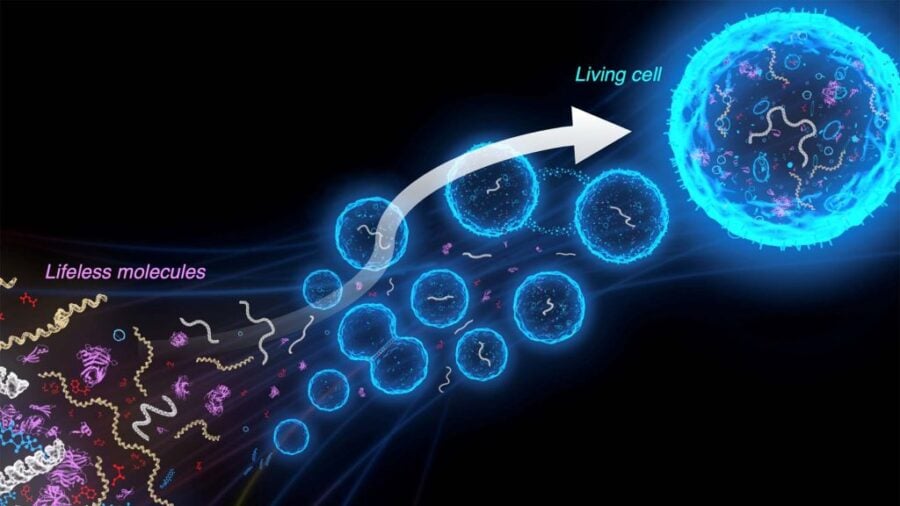Researchers have engineered key modules for synthetic cells, bringing us closer to understanding the fundamental building blocks of life.
Summary: A team at the University of Groningen has developed simplified artificial versions of cellular energy production and nutrient transport systems, advancing efforts to construct a synthetic cell from the ground up.
Estimated reading time: 6 minutes
For decades, scientists have pursued one of biology’s most ambitious goals: creating artificial life from scratch. Now, researchers at the University of Groningen have taken significant steps toward this aim by engineering simplified versions of two crucial cellular systems.
Professor Bert Poolman and his team have developed artificial modules that mimic energy production and nutrient transport in living cells. Their work, published in Nature Nanotechnology and Nature Communications, represents a major advance in the field of synthetic biology and offers new insights into the fundamental workings of life.
Simplifying Cellular Energy Production
One of the key challenges in creating synthetic life is replicating the energy production systems found in living cells. Mitochondria, often called the powerhouses of the cell, use hundreds of components to convert ADP into ATP, the energy currency of life.
Poolman’s team has dramatically simplified this process. “Instead of the hundreds of components of mitochondria, our system for energy conversion uses just five,” says Poolman. Their artificial energy factories can produce ATP from the amino acid arginine, demonstrating a basic metabolic cycle crucial for life.
This simplified system comes with trade-offs. Poolman explains, “Of course, the simplification comes at a price: we can only use arginine as the energy source, while cells use all kinds of different molecules, such as amino acids, fats, and sugars.”
Nutrient Transport and Concentration
The team also developed a second module that mimics how cells concentrate and convert nutrients. This system uses an electrical potential to drive the accumulation of nutrients inside vesicles – tiny, cell-like sacs.
“Many protein shakes and bars have excessive amounts of added sugar and caffeine that are unhealthy for teens,” Poolman notes. “This module demonstrates how cells can selectively transport and concentrate specific molecules, a fundamental process for life.”
Initially designed to simply transport lactose, the system was expanded to include enzymes that could convert the sugar into other useful molecules. This ability to modify and expand the system’s functions is a crucial step toward creating more complex, life-like systems.
The Path to Synthetic Life
These developments are part of a larger effort to build a synthetic cell from the ground up. The BaSyc (Building a Synthetic Cell) consortium, which includes six Dutch research institutes, aims to create the elements needed for a fully functional synthetic cell.
Poolman’s work contributes two essential modules to this effort. The next step, he says, is “adding our metabolic energy producing systems to a synthetic cell division system created by colleagues.”
While significant progress has been made, creating a fully functional synthetic cell remains a distant goal. The complexity of even the simplest living cells far exceeds our current capabilities. However, each advance brings us closer to understanding the fundamental principles of life.
Implications and Future Directions
The creation of simplified cellular modules has implications beyond the quest for synthetic life. These systems can serve as platforms for studying cellular processes in isolation, potentially leading to new insights in biology and medicine.
Furthermore, synthetic cellular components could have applications in biotechnology, drug delivery, and the production of novel biomaterials. By stripping cellular functions down to their essentials, researchers can engineer systems tailored for specific tasks.
Looking ahead, Poolman and his colleagues have secured funding for a new ten-year project called EVOLF. This ambitious endeavor aims to explore how many more lifeless modules can be combined to create living cells.
“Ultimately, this would give us a blueprint for life, something that is currently lacking in biology,” Poolman concludes. “This may eventually have all kinds of applications, but will also help us to better understand what life is.”
As researchers continue to unravel the mysteries of life at its most fundamental level, we edge closer to answering one of science’s most profound questions: what exactly makes something alive?
Quiz: Test Your Knowledge
- How many components does Poolman’s artificial energy production system use, compared to real mitochondria? a) The same number b) About half as many c) Only five d) Hundreds more
- What is the primary energy source used in the artificial energy production system? a) Glucose b) Arginine c) ATP d) Fatty acids
- What is the main goal of the BaSyc consortium? a) To create artificial mitochondria b) To build a synthetic cell from the ground up c) To simplify existing cells d) To develop new energy sources
Answer key:
- c
- b
- b
Glossary of Terms
- Synthetic biology: An interdisciplinary field that involves redesigning organisms for useful purposes by engineering them to have new abilities.
- Mitochondria: Organelles found in most eukaryotic cells, often described as cellular power plants.
- ATP (Adenosine Triphosphate): A high-energy molecule that stores and supplies energy for cellular processes.
- Vesicle: A small, membrane-enclosed sac that can store or transport substances within a cell.
- Metabolic cycle: A series of chemical reactions in a cell that convert nutrients into energy and cellular components.
Enjoy this story? Get our newsletter! https://scienceblog.substack.com/


